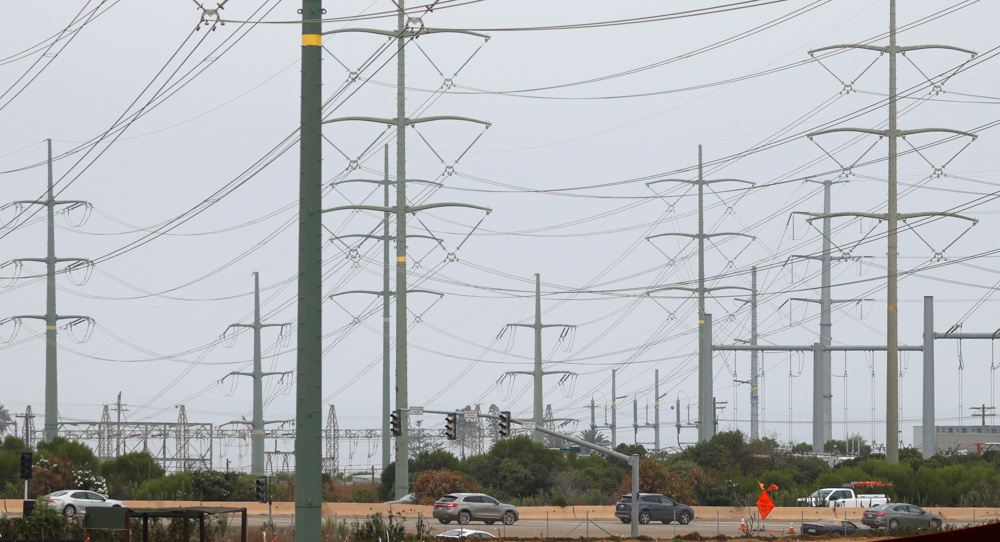California rolling blackouts warning issued for 3 million homes
The agency running California’s power grid has warned that millions of homes could be hit by rolling blackouts imposed on Monday to manage overwhelming energy demands caused by an extreme heat wave baking the state for a fourth straight day.
Officials for the California Independent System Operator estimated that peak electricity consumption on Monday would likely exceed available supply statewide by as much as 4,400 megawatts - roughly equivalent to the amount of power needed by 3.3 million homes.
A lapse of that magnitude would mark the most severe shortfall to strike California’s grid since 2001, the last time utilities in the state essentially rationed energy in the form of rolling blackouts, said Ralph Cavanagh, energy co-director for the Natural Resources Defense Council, an environmental group.
The controlled power disruptions, with alternating blocks of utility customers losing electricity for one or two hours at a time, are designed to prevent excess demand from triggering a more widespread collapse of the grid that could last days.
An earlier round of rotating outages this weekend affected around 408,000 customers of four utilities across California, more than half of them served by Pacific Gas and Electric Company (PCG.N).
Stephen Berberich, president and CEO of the Independent System Operator, told reporters on a conference call that Monday’s blackouts could run from late afternoon to late evening.
The full extent of outages is a moving target that hinges largely on how much energy customers might conserve during the day as part of a Flex Alert declared by the agency on Sunday, urging consumers to voluntarily scale back electricity use.
The latest power crunch follows a series of large-scale shutdowns imposed by PG&E and other utilities during wind storms last fall as a precaution against wildfires being sparked by downed transmission lines. Large swaths of the state’s power grid were de-energized for days during those shutoffs.
The current heat wave, which has roasted parts of Southern California in triple-digit temperatures since Friday, was attributed to an enormous high-pressure system over much of the Western United States, and was expected last through Wednesday.
The hottest air temperature recorded anywhere on the planet in at least a century, and possibly ever, was reached in Death Valley in California’s Mojave Desert on Sunday afternoon, where it soared to 130 Fahrenheit (54.4 Celsius).
The state’s power grid was also pushed to its limits over the weekend by sporadic winds that disrupted wind farm power generation and the system failure of a key natural gas power plant, officials said.
Governor Gavin Newsom on Monday ordered an investigation into the blackouts and signed an emergency proclamation seeking to free up excess energy capacity.
(Story by Reuters)
Mother’s Day: Sareh Javanmardi’s inspiring journey as Paralympic champion and mother
Russia downs over 40 Ukrainian drones as Putin vows 'destruction' on Kiev
VIDEO | Yemen: A bone in Israeli neck
D-8’s role in Iran’s economy after Cairo summit
China slams US as ‘war-addicted’ threat to global security
China ‘firmly opposes’ US military aid to Taiwan
VIDEO | Press TV's News Headlines
President Yoon Suk Yeol to be removed from office











 This makes it easy to access the Press TV website
This makes it easy to access the Press TV website